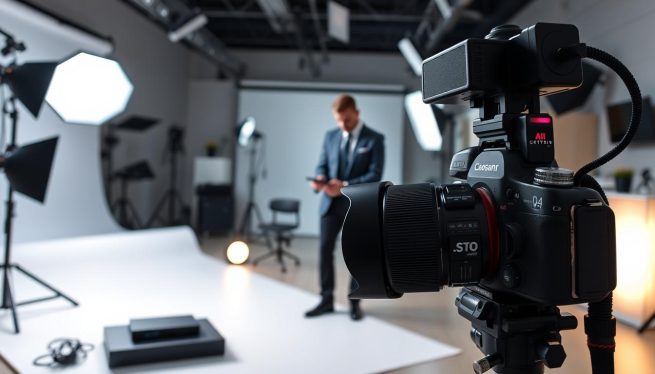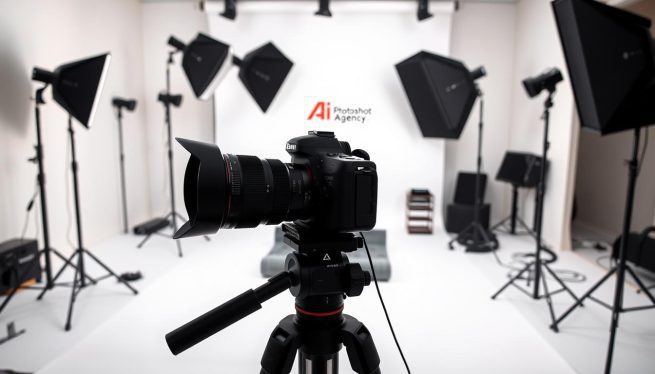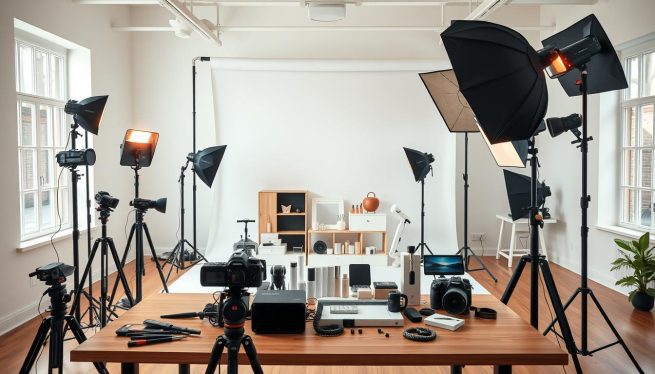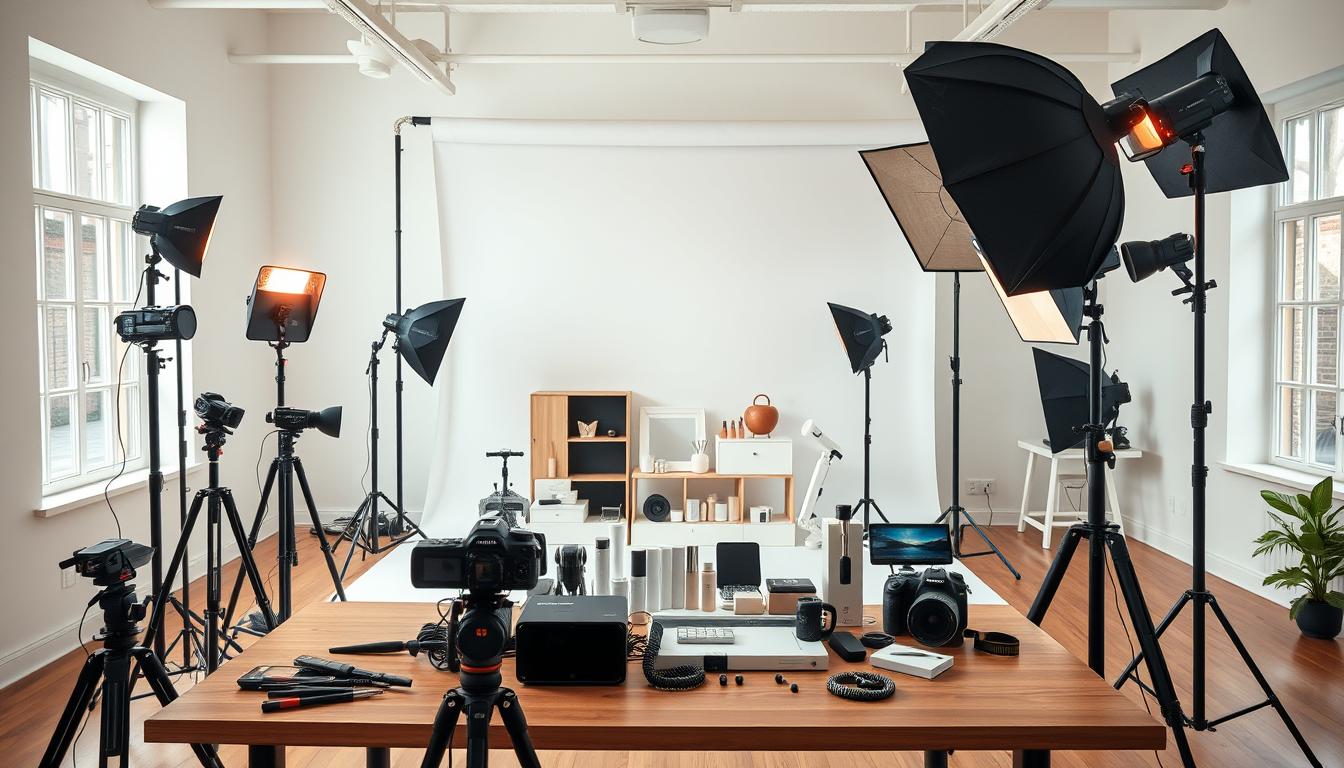Best Product Photography
Discover the secrets of Best Product Photography with expert tips, techniques, and equipment recommendations to create stunning visuals that drive sales in Pakistan.
Best Product Photography
Every product has a story, and I learned this early in my digital marketing career in Karachi. I struggled to capture the essence of handcrafted leather wallets for an online marketplace. I realized that the best product photography is not just about taking pictures. It’s about creating an emotional connection with the viewer.

In the competitive e-commerce world, a good product photoshoot can make a huge difference. Visual storytelling is key for businesses to stand out in Pakistan’s digital marketplace. Professional product photography turns ordinary items into compelling stories that grab and hold the attention of potential customers.
This guide will take you through the art of creating stunning product images. These images not only showcase your products but also tell their unique story. Whether you’re a small business owner or an aspiring photographer, these tips will help you improve your visual marketing strategy.
Key Takeaways
- Understand the critical role of visual storytelling in e-commerce
- Learn techniques to capture compelling product images
- Discover how professional photography impacts sales
- Explore cost-effective strategies for high-quality product shoots
- Master the art of creating emotional connections through images
Mastering Professional Product Photography Essentials
Professional product photography is key for e-commerce success. It needs a mix of technical skills and creative vision. Whether you’re a small business owner or a photographer, knowing the basics can change your visual content.

Good e-commerce photography is more than just taking pictures. It requires knowing your equipment, camera settings, and photography rules to make products look great.
Understanding Camera Settings for Product Shots
Knowing your camera settings is vital for product photography. Focus on:
- Aperture control for depth of field
- Shutter speed optimization
- ISO sensitivity management
- White balance calibration
Key Equipment Requirements
Having the right equipment can improve your photography. You’ll need:
- High-resolution digital camera
- Sturdy tripod
- Professional lighting kit
- Neutral backdrop
- Editing software
Basic Photography Principles
Knowing photography basics is important for great product images. Pay attention to composition, lighting, and perspective to make products look appealing.
“Great product photography tells a story without words” – Professional Photography Expert
By using these techniques, you’ll learn to make visual content that draws in and converts customers. This is crucial in the competitive e-commerce world.
Creating the Perfect Product Photography Setup
Creating a top-notch product photography setup is key to taking amazing product pictures. Professional photographers know that a well-thought-out workspace can make any product look great. This makes it a valuable marketing tool.

When setting up your product photography space, keep these important points in mind:
- Choose a dedicated shooting space with consistent lighting
- Invest in a sturdy, adjustable photography table
- Select neutral background materials
- Organize your equipment for quick access
Creating the perfect product photography setup needs careful planning. Location is very important. Pick a spot with little ambient light and enough room for your gear.
“A great product photography setup is 50% preparation and 50% technique.” – Professional Photography Expert
Here are the must-haves for your product photography setup:
- High-quality camera with manual settings
- Tripod for stability
- Multiple light sources
- Reflectors and diffusers
- Clean, neutral backdrop
Being adaptable is key in product photography setup. Different products need different setups. Stay open to trying new things with your space.
Essential Lighting Techniques for Product Photos
Lighting is key in making product photos stand out. The right light can show off details, add depth, and grab attention fast.
Pro photographers know lighting is their ace. It can make a product look and feel different to buyers.
Natural vs. Artificial Lighting
Photographers have two main choices for lighting:
- Natural Light: Soft, free, and flattering for many products
- Artificial Light: Consistent, controllable, and precise
Natural light is perfect for organic items, food, and lifestyle shots. Artificial light gives more control for detailed photos.
Mastering Light Diffusion
Light diffusion softens shadows and spreads light evenly. Pro photographers use:
- Softbox diffusers
- White umbrellas
- Translucent fabrics
“Great product photography is 70% lighting and 30% everything else.” – Professional Photography Experts
Eliminating Unwanted Shadows
Shadows can pull focus away from the product. Good lighting techniques include:
- Using multiple light sources
- Positioning lights strategically
- Employing reflectors
| Lighting Type | Best For | Difficulty Level |
|---|---|---|
| Natural Window Light | Soft, organic products | Easy |
| Ring Light | Beauty, small products | Medium |
| Studio Strobe Lights | Professional, detailed shots | Advanced |
Mastering product photography lighting takes practice, trying new things, and knowing how light works.
Best Product Photography Equipment and Tools
Choosing the right equipment is key for amazing product photos. Professional photographers know that top-notch gear makes ordinary shots pop.
Here’s what you need for the best product photography:
- High-resolution digital cameras
- Versatile lens collection
- Sturdy tripods
- Professional lighting setup
- Background systems
Choosing the right camera is crucial. Pros say go for cameras with high resolution and manual settings.
| Equipment Category | Recommended Options | Price Range |
|---|---|---|
| Cameras | Canon EOS R, Sony A7 III | $1500-$3000 |
| Lenses | 50mm Prime, 24-70mm Zoom | $500-$2000 |
| Lighting | Softbox Kit, LED Panels | $200-$1000 |
If you’re on a budget, start with basic gear and upgrade later. Buying quality tools bit by bit helps you grow without breaking the bank.
“The right equipment doesn’t make the photographer, but it makes the journey smoother.” – Professional Product Photographer
Don’t forget about accessories like remote shutter releases and editing software. They help improve your product photography workflow.
Styling and Composition Tips for E-commerce Success
Creating compelling lifestyle product images is an art that can boost your online sales. Visual storytelling turns ordinary shots into powerful marketing tools. These tools connect with potential customers on an emotional level.
Successful e-commerce photography is more than just showing products. It’s about telling a story that shows how your product fits into their daily lives.
Product Arrangement Techniques
Effective product arrangement is key for lifestyle product images. Here are some strategies:
- Create a visual hierarchy by placing main products front and center
- Use asymmetrical layouts to grab attention
- Implement negative space to highlight product details
- Show products in settings that feel real and relatable
Background Selection Guidelines
The right background makes lifestyle product images memorable. Choose backgrounds that:
- Match the product’s color palette
- Reflect the target audience’s style
- Provide context without overwhelming the product
- Keep a consistent look across your brand
Props and Accessories Usage
Strategic prop selection can make lifestyle product images stand out. Choose props that tell a story and connect with viewers emotionally.
“Great product photography doesn’t just show what something looks like—it demonstrates how it feels to own and use the product.” – Professional Photography Expert
The goal of lifestyle product images is to help customers see themselves using your product. Each element should work together to tell a compelling, authentic story.
Advanced Post-Processing Techniques
Catalog photography needs precise post-processing. Professional photographers know editing makes great images even better. Raw images often need a lot of work to show products perfectly.
Tools like Adobe Photoshop and Lightroom are key for improving product images. They help photographers enhance images with specific techniques:
- Color correction and calibration
- Background refinement
- Detail enhancement
- Consistent image styling
Important post-processing strategies include:
- Balancing exposure levels
- Removing subtle imperfections
- Creating uniform product presentation
- Maintaining product authenticity
“Great catalog photography is 50% shooting, 50% editing” – Professional Photography Experts
Advanced editing makes product catalogs more appealing. It attracts customers. To master these skills, you need practice and to understand digital image manipulation.
| Editing Technique | Purpose | Impact |
|---|---|---|
| Color Correction | Standardize product colors | Accurate representation |
| Shadow Management | Reduce distracting shadows | Clean product presentation |
| Background Cleanup | Create professional backdrop | Enhanced visual appeal |
Professional catalog photography requires technical skill and artistic vision in post-processing.
White Background Product Photography Mastery
Creating stunning white background product photos is key for photographers and e-commerce pros. This clean, simple style lets products stand out. It needs precision and technical skill.
Getting a pure white background involves several important techniques. These methods turn simple product images into top-notch visuals.
Achieving Pure White Backgrounds
White background product photos need special lighting and camera settings:
- Use multiple light sources to eliminate shadows
- Select bright, diffused lighting
- Position lights symmetrically around the product
- Maintain consistent light intensity
Color Correction Methods
Post-processing is vital for perfecting white background product photos. Here are some color correction tips:
- Adjust white balance settings
- Use histogram tools for exposure control
- Apply selective color adjustments
- Remove color cast effectively
“The secret to exceptional white background product photos is understanding light and precision editing.”
Mastering white background product photos takes practice and technical knowledge. By using these techniques, photographers can make compelling visuals. These visuals attract customers and highlight products in their best light.
Lifestyle Product Photography Approaches
Lifestyle product images tell stories that speak to customers. They turn simple products into engaging visual tales that touch our hearts.
To create amazing lifestyle product images, you need a plan and creativity. Photographers must blend products into everyday scenes. This shows their usefulness and beauty.
“Great lifestyle photography doesn’t just show a product—it demonstrates how that product enhances everyday experiences.”
- Select authentic, relatable settings
- Choose models representing target audience demographics
- Capture natural, spontaneous interactions
- Emphasize product functionality
In Pakistan, lifestyle product images that reflect local culture and tastes really grab people’s attention. Knowing what looks good in your area makes your images more powerful.
| Photography Approach | Key Characteristics | Consumer Impact |
|---|---|---|
| Environmental Context | Product integrated into real-life scenarios | High relatability |
| Aspirational Styling | Showcasing lifestyle improvements | Emotional connection |
| Cultural Representation | Local settings and traditions | Increased trust |
Successful lifestyle product images turn marketing into stories that inspire and motivate buyers.
Common Product Photography Mistakes to Avoid
Product photo shoots can be tough, even for pros. It’s key to know and avoid common mistakes. This helps make stunning visuals that show off your product and draw in customers.
Professional product photos need careful attention. Small mistakes can hurt the image quality and scare off buyers.
Technical Errors and Solutions
- Incorrect Camera Settings: Always use manual mode to control exposure, aperture, and ISO precisely
- Blurry Images: Use a tripod to eliminate camera shake during product photo shoots
- Poor Focus: Select single-point autofocus and aim for sharp product details
- Inconsistent White Balance: Calibrate settings or use custom white balance for accurate color representation
Composition Pitfalls
- Cluttered Backgrounds: Keep backgrounds clean and minimal
- Improper Product Placement: Center the product and use negative space effectively
- Inadequate Lighting: Experiment with soft, diffused lighting to highlight product features
- Unrealistic Product Representation: Capture authentic images that match customer expectations
“Perfection in product photography is about eliminating distractions and focusing on the product’s unique qualities.”
By spotting and fixing these common errors, photographers can make their product photos look top-notch. This creates engaging visuals that boost sales and interest.
Budget-Friendly Product Photography Solutions
Professional product photography doesn’t need a big budget. Creators can get amazing results with simple methods and little gear. The key is to be creative, not to spend a lot on equipment.
Begin with smartphone cameras, which have come a long way. Today’s phones can take clear, detailed photos of products. Add these budget-friendly tools to your smartphone:
- White poster board as a background
- Natural window lighting
- DIY light diffusers using white bedsheets
- Free editing apps like Snapseed
Flat lay product styling is a great choice for those watching their budget. It involves arranging products on a flat surface to create eye-catching scenes. This method is easy on the wallet but looks professional.
“Great product photography is about creativity, not expensive equipment.” – Professional Photography Mentor
Use free online resources to improve your skills. YouTube, photography blogs, and social media have lots of tips on product photography. You can learn without spending a lot.
- Practice consistent lighting
- Experiment with composition
- Learn basic post-processing skills
Money shouldn’t stop you from taking great product photos. With smart strategies and creative ideas, anyone can make images that grab attention and show off products well.
Conclusion
Mastering best product photography is a journey for e-commerce businesses in Pakistan. This guide shows how to make visual content that grabs customers’ attention and boosts sales.
Lighting, composition, and post-processing are key in product photography. Professional photographers know it’s not just about skills. It’s about telling stories and connecting with buyers emotionally.
Keep learning and practicing to find your visual style. Whether you’re small or big, improving your photography can make your brand more appealing. It can also increase customer interest.
Need help or a professional photo shoot? Contact our expert team via WhatsApp at +92 325 1228855. We aim to help Pakistani businesses grow with top-notch visual marketing and product images.
FAQ:
What equipment do I need to start product photography?
To start, you’ll need a good camera, even a smartphone with a great camera. A tripod for stability is also key. You’ll need basic lighting like softboxes or ring lights and a clean backdrop.
As you get better, you might want professional cameras, macro lenses, and advanced lighting setups.
How important is lighting in product photography?
Lighting is very important in product photography. It makes your products look good and detailed. Natural or soft artificial light is best.
It helps avoid harsh shadows and highlights the product’s features. Try different lighting angles to find the best look for your products.
What background works best for product photos?
A white background is common for e-commerce photos. It looks clean and professional. But, lifestyle or contextual backgrounds can also work well.
It depends on your brand and the story you want to tell about your product.
Do I need professional editing software for product photos?
While Adobe Photoshop is great, you can start with free or low-cost options. GIMP, Canva, or smartphone apps are good for beginners. Just make small changes to enhance the product’s look.
How can I create professional-looking product photos on a budget?
Creating professional photos on a budget is easy. Use natural light near a window. Make a DIY lightbox with white poster board.
Use a clean white sheet as a backdrop. Your smartphone’s camera can also work well. Focus on good composition and lighting.
What are some common mistakes to avoid in product photography?
Avoid poor lighting, cluttered backgrounds, and inconsistent styling. Make sure your product is the focus. Use consistent lighting and angles.
Keep backgrounds clean and make natural-looking edits. This accurately represents the product.
How do I photograph different types of products effectively?
Each product type needs a different approach. Small items need macro photography and controlled lighting. Clothing looks good on mannequins or in lifestyle shots.
Reflective items like jewelry need careful light diffusion. Large items might need wider shots with context. Adapt your technique to each product’s unique needs.
What is flat lay product photography?
Flat lay photography shows products arranged and photographed from above. It’s popular for fashion, beauty, and small products. Arrange items creatively and use consistent backgrounds.
Ensure good lighting for visually appealing flat lay images.
How many photos should I take of each product?
Take multiple angles and views of each product. 3-5 images are usually enough. Include a main shot, close-up details, and lifestyle or in-use images.
Also, include different color or variant views if applicable. This gives customers a full understanding of the product.
Can I use smartphone cameras for professional product photography?
Yes, modern smartphone cameras can produce great product photos. Use features like portrait mode and manual focus. External clip-on lenses can also help.
While professional cameras offer more flexibility, smartphones are a great starting point for small businesses and individual sellers.






